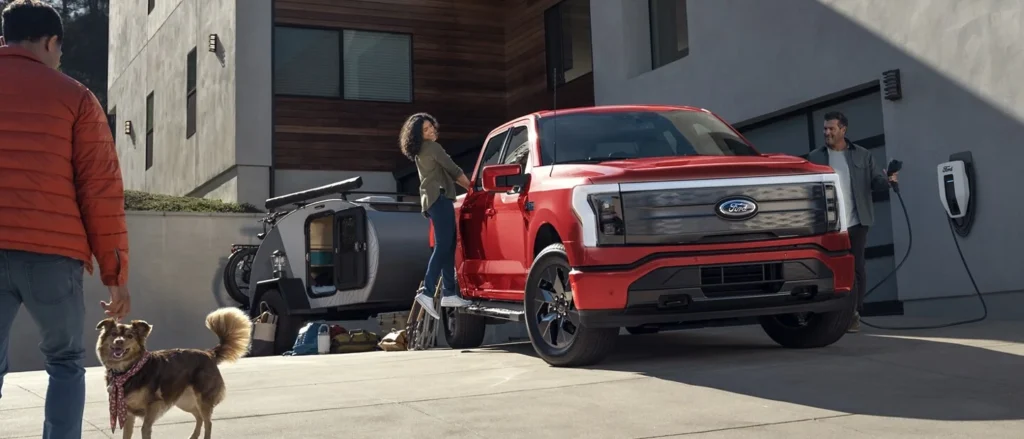September 3, 2024, Marshall, Michigan — In 2024, Ford Motor Company announced a significant reduction in the production of its F-150 Lightning, the electric variant of its best-selling pickup truck. The decision comes as sales of the Lightning have plummeted, largely due to its higher price compared to its gasoline-powered counterpart. This challenge is not unique to Ford; the average price of a new electric vehicle (EV) in the United States hovers around $55,000, making EVs a tough sell for many American consumers at a time when widespread adoption is crucial to meeting climate goals.
Approximately 40% of the cost to produce an electric vehicle is tied up in the battery. In 2023, Ford explored potential sites in Virginia and Michigan for a new battery plant aimed at reducing these costs. However, the project faced a major obstacle. The battery technology in question was sourced from Contemporary Amperex Technology Co. Limited (CATL), the world’s largest battery manufacturer, based in Fujian Province, China.

Virginia’s governor rejected the proposal for the battery plant due to its ties with CATL, citing concerns about the company’s alleged influence by the Chinese Communist Party. Ford’s CEO responded by emphasizing that the proposed plant would be a wholly-owned subsidiary of Ford. Nevertheless, the automaker was forced to look elsewhere, eventually selecting Marshall, Michigan, for the site. The project is now embroiled in a broader trade conflict between the U.S. and China, as China’s dominance in the global EV market continues to grow.
China’s rise to prominence in the EV sector, which now accounts for over half of global EV sales, is underpinned by its control over EV battery production. Chinese companies have gained a stranglehold on the industry, thanks in large part to substantial government support over the past two decades. This support was motivated by China’s goal of reducing its dependence on oil imports and tackling severe air pollution in its cities.
To bolster its EV industry, the Chinese government provided companies with subsidies, cheap land leases, and low-interest loans. From 2009 to 2022, the government poured an estimated $29 billion into the EV sector through subsidies, research funding, and tax breaks. Additionally, local governments created an instant market for Chinese EVs by electrifying public transportation fleets, like Shenzhen’s 16,000-strong electric bus fleet, which was supplied by BYD, now the world’s largest EV manufacturer.

The Chinese government also implemented strict battery standards, pushing domestic companies to improve their technology. Foreign automakers like GM and Tesla were required to use Chinese-made batteries to qualify for consumer subsidies, further solidifying China’s dominance in the EV battery market. By 2024, over half of all new car sales in China were electric, marking a significant shift in consumer preference.
China’s control extends beyond production to the entire supply chain for lithium-ion batteries, the core of most EVs. Chinese companies have secured ownership stakes in mines worldwide, ensuring control over the supply and price of essential minerals like nickel, cobalt, and lithium. Moreover, China dominates the refining process, which is crucial for producing battery components such as the cathode, anode, electrolyte, and separator. This comprehensive control has allowed Chinese companies to lead in battery innovation, developing cost-effective alternatives like lithium iron phosphate (LFP) batteries that avoid expensive minerals like nickel and cobalt.
In 2023, CATL unveiled an LFP battery capable of powering a car for 370 miles on a ten-minute charge. BYD also introduced its version, the “blade battery,” which increases energy density by optimizing battery cell shape. Today, LFP batteries are increasingly popular, with nearly all manufacturing taking place in China. However, CATL has begun expanding its production capabilities to Europe, with plants in Germany and plans for another in Hungary.
Despite these advancements, Ford’s decision to build an LFP battery plant in Michigan has sparked a U.S. House investigation, the outcome of which could determine the future of American EV production. As the U.S. ramps up its investment in domestic battery manufacturing—estimated to cost $82 billion by 2030—questions remain about the feasibility of reducing reliance on Chinese technology in the short term. For now, the U.S. faces a difficult choice between distancing itself from China and advancing its electric vehicle ambitions.

